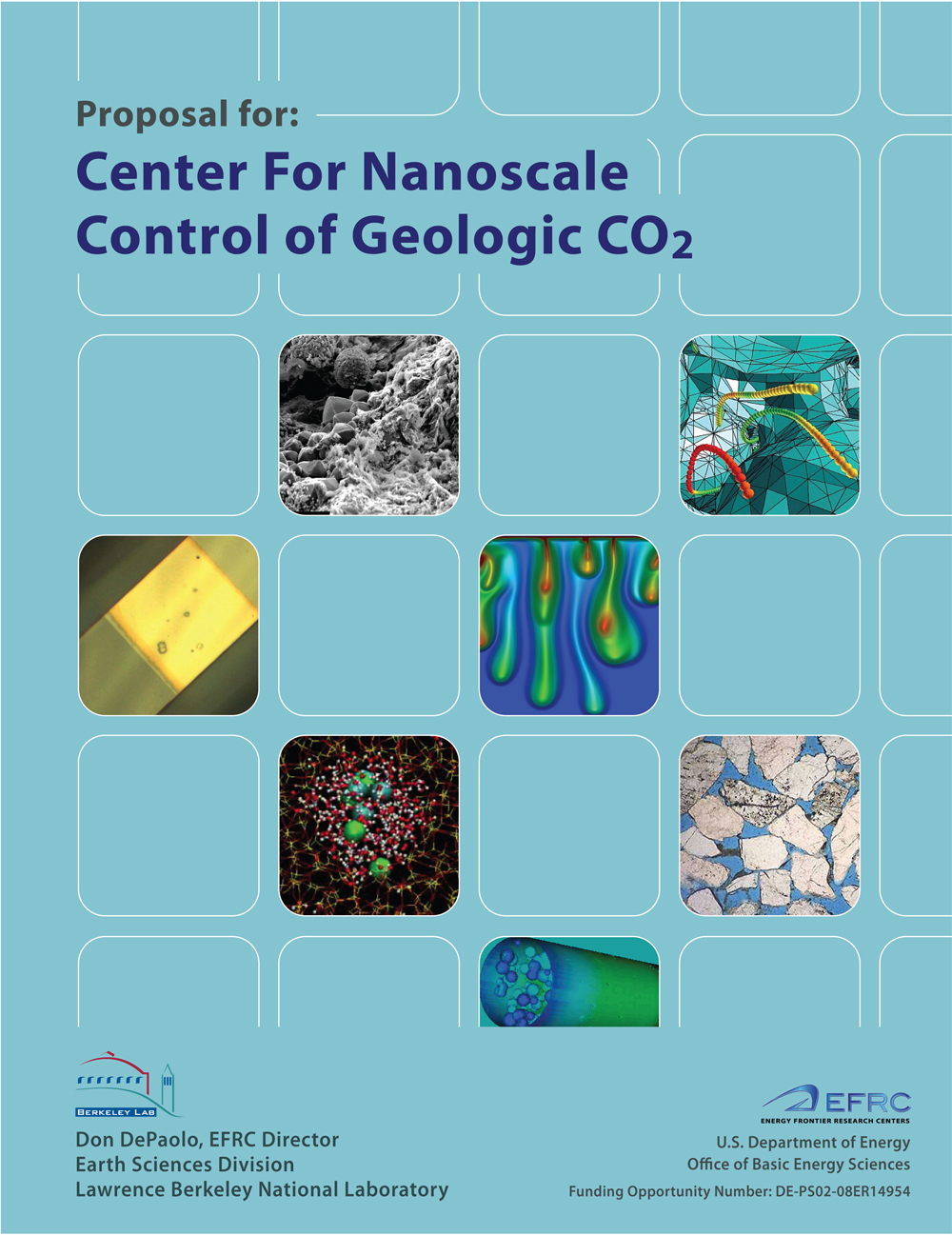Contact: Paul Preuss
When President Barack Obama outlined his plans for reinvigorating the country’s scientific research and education at a meeting of the National Academy of Sciences in Washington, D.C., on Monday, April 27th, Don DePaolo, Director of Berkeley Lab’s Earth Sciences Division, was among the scientists in the audience.
“In no area will innovation be more important than in the development of new technologies to produce, use, and save energy,” said the President, noting that “Our future on this planet depends upon our willingness to address the challenge posed by carbon pollution.”
As the President was speaking, the White House published additional details of his plan, including the notice of grants from the U.S. Department of Energy to establish 46 Energy Frontier Research Centers (EFRCs). One of the Centers, focused on capturing carbon from power plant and natural gas emissions, will be housed at the University of California at Berkeley, while another, focused on long-term carbon storage, will be led from Berkeley Lab.
“The two are very synergistic,” said Paul Alivisatos, Berkeley Lab’s Acting Director. “Together, they put Berkeley in a very strong position to contribute to the fundamental knowledge needed to address the issues of carbon capture and storage, one of the most important avenues for climate change mitigation, which cannot proceed without a deeper understanding of the science.”
Secretary of Energy Steven Chu outlined the purpose of the 46 EFRCs, saying, “These Centers will mobilize the enormous talents and skills of our nation’s scientific workforce in pursuit of the breakthroughs that are essential to make alternative and renewable energy truly viable as large-scale replacements for fossil fuels.”
In a press release following the President’s speech, DOE named the individual EFRCs that will share $777 million over the next five years. It was only then that DePaolo learned that the Center for Nanoscale Control of Geologic CO2, of which he was the director, was among them. Although led by Berkeley Lab, the Center includes collaborating researchers at Lawrence Livermore National Laboratory, the Massachusetts Institute of Technology, Oak Ridge National Laboratory, and the University of California at Davis. The UC Berkeley Center for Gas Separations Relevant to Clean Energy Technologies is headed by Berend Smit, a professor of chemical engineering and chemistry.
“This new award will give our team of investigators an opportunity to probe the fundamental chemical, physical, and biological processes that control the movement of carbon dioxide fluids in the earth,” said DePaolo, who is also a professor of earth and planetary science at UC Berkeley. “The EFRC gives us a framework under which we are able to combine the extraordinary talents that we have at Berkeley Lab, UC Berkeley, and our collaborating institutions to focus on a problem of global significance. In pursuing this new research, we will bring to bear many unique DOE research facilities, such as the Advanced Light Source, the Molecular Foundry, and the National Energy Research Scientific Computing Center at Berkeley Lab, and the Spallation Neutron Source at Oak Ridge.”
The Center for Nanoscale Control of Geologic CO2‘s immediate emphasis is on understanding and solving, at a fundamental science level, the problems of sequestering carbon dioxide captured from coal-burning power plants. The science of subsurface flow, however, is directly applicable to a host of other environmental and energy-related challenges, including geothermal energy production, storage of spent nuclear fuel, and recovery of oil and gas from depleted reservoirs.
The overarching goal is to establish control over fluids deep underground at the level of individual molecules as they interact with the pore network of surrounding rock, including managing how these fluids – especially carbon-dioxide-rich fluids – flow, dissolve, and precipitate. Within 10 years the researchers hope to fill the many gaps in our present knowledge, including the effects of nanoscale confinement on fluid dynamics and on chemical, geological, and biological reactions with surrounding surfaces, materials, and microorganisms.
Specific research projects include characterizing the pore configuration of a wide range of sedimentary rocks, including brine-filled formations. Geologic sequestration takes place on many scales, both in space and in time – from the scale of individual molecules of rock or fluid to the geological scale of entire reservoirs, from fractions of a second to thousands of years.
Understanding chemical and microbiological interactions are among the key advances that are required. The goal is to fill the available pore space efficiently without damaging the surrounding rock, since the liquid CO2 must be stored for hundreds of years without leaking into the atmosphere.
Beginning in late summer of 2009, the Center expects to receive approximately $20 million in funding through the Basic Energy Research program in DOE’s Office of Science, spread over five years. Beside DePaolo, key personnel include Berkeley Lab’s Jill Banfield, Jim DeYoreo, Kevin Knauss, Steve Pride, Gary Sposito, Carl Steefel, Tetsu Tokunaga, and Glenn Waychunas; Rick Ryerson from Livermore; Daniel Rothman from MIT; David Cole and David Wesolowski from Oak Ridge; and Alexandra Navrotsky from UC Davis.
Additional information
President Obama’s remarks to the meeting of the National Academy of Sciences are at http://www.whitehouse.gov/the_press_office/Remarks-by-the-President-at-the-National-Academy-of-Sciences-Annual-Meeting/
The White House’s announcement of Energy Frontier Research Centers is contained in the fact sheet at http://www.whitehouse.gov/the_press_office/Fact-Sheet-A-Historic-Commitment-To-Research-And-Education/
The Office of Science, Basic Energy Sciences’ announcement of the Energy Frontier Research Center awards is at http://www.er.doe.gov/bes/EFRC.html
The UC Berkeley press release announcing awards for the two Centers at UC Berkeley and Berkeley Lab is at http://www.berkeley.edu/news/media/releases/2009/04/28_efrc.shtml
For more about Berkeley Lab’s Earth Sciences Division, visit http://esd.lbl.gov/home/
